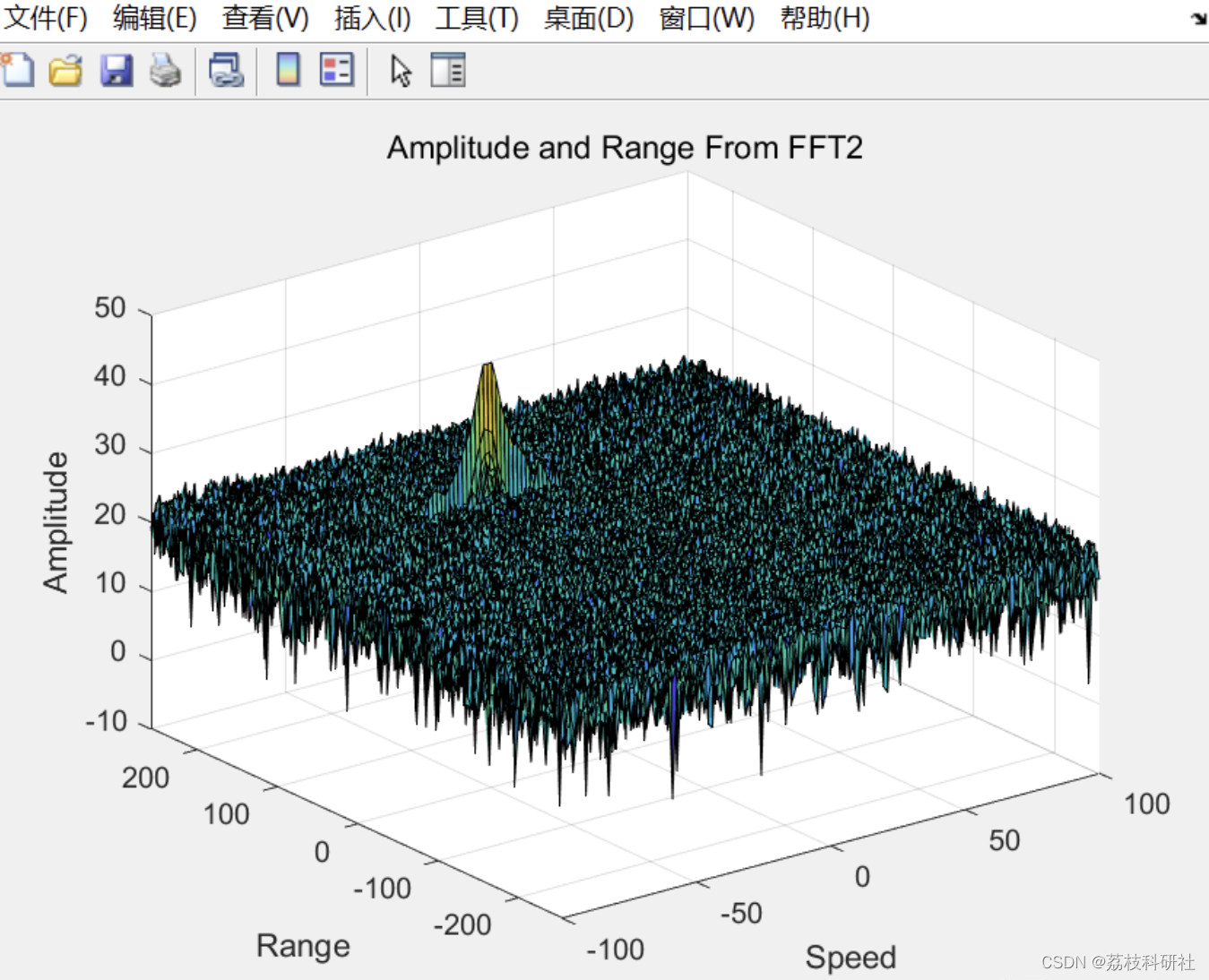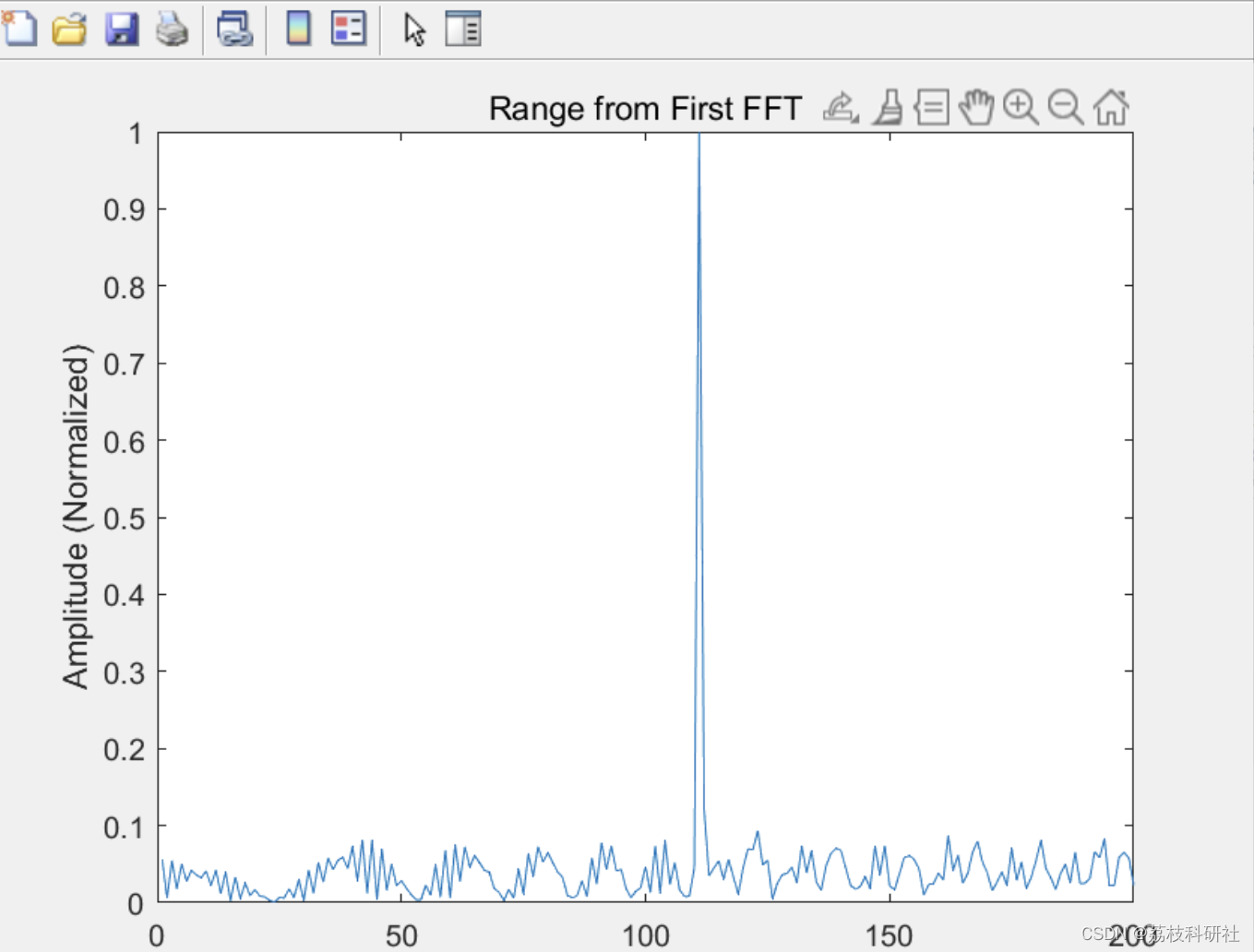👨🎓个人主页:研学社的博客
💥💥💞💞欢迎来到本博客❤️❤️💥💥
🏆博主优势:🌞🌞🌞博客内容尽量做到思维缜密,逻辑清晰,为了方便读者。
⛳️座右铭:行百里者,半于九十。
📋📋📋本文目录如下:🎁🎁🎁
目录
💥1 概述
随着雷达技术的迅速发展,其应用领域不断拓展,现代雷达面临着更复杂的检测环境以及更多样的目标。在这种背景下,传统雷达目标检测算法已不能满足实际应用的需求,对微弱目标及复杂杂波环境中目标的检测性能受到限制。近年来,神经网络凭借着强大的特征提取能力、优秀的检测性能,使得雷达检测有了新的机遇,基于深度学习的雷达目标检测算法应运而生。但现有基于深度学习的雷达目标检测算法受到雷达设备及复杂多样的应用场景的限制,无法发挥其最优性能。在此基础上,为了进一步提高对微弱目标的检测性能,本文对复杂环境的雷达目标检测算法进行研究。
📚2 运行结果


 部分代码:
部分代码:
%% Radar Specifications
%%%%%%%%%%%%%%%%%%%%%%%%%%%
% Frequency of operation = 77GHz
% Max Range = 200m
% Range Resolution = 1 m
% Max Velocity = 100 m/s
%%%%%%%%%%%%%%%%%%%%%%%%%%%
c = 3e8
%% User Defined Range and Velocity of target
% *%TODO* :
% define the target's initial position and velocity. Note : Velocity
% remains contant
range = 110
vel = -20
max_range = 200
range_res = 1
max_vel = 100 % m/s
%% FMCW Waveform Generation
% *%TODO* :
%Design the FMCW waveform by giving the specs of each of its parameters.
% Calculate the Bandwidth (B), Chirp Time (Tchirp) and Slope (slope) of the FMCW
% chirp using the requirements above.
B = c / (2*range_res)
Tchirp = 5.5 * 2 * (max_range/c)
slope = B/Tchirp
%Operating carrier frequency of Radar
fc= 77e9; %carrier freq
%The number of chirps in one sequence. Its ideal to have 2^ value for the ease of running the FFT
%for Doppler Estimation.
Nd=128; % #of doppler cells OR #of sent periods % number of chirps
%The number of samples on each chirp.
Nr=1024; %for length of time OR # of range cells
% Timestamp for running the displacement scenario for every sample on each
% chirp
t=linspace(0,Nd*Tchirp,Nr*Nd); %total time for samples
%Creating the vectors for Tx, Rx and Mix based on the total samples input.
Tx=zeros(1,length(t)); %transmitted signal
Rx=zeros(1,length(t)); %received signal
Mix = zeros(1,length(t)); %beat signal
%Similar vectors for range_covered and time delay.
r_t=zeros(1,length(t));
td=zeros(1,length(t));
%% Signal generation and Moving Target simulation
% Running the radar scenario over the time.
for i=1:length(t)
% *%TODO*
%For each time stamp update the Range of the Target for constant velocity.
r_t(i) = range + (vel*t(i));
td(i) = (2 * r_t(i)) / c;
% *%TODO* :
%For each time sample we need update the transmitted and
%received signal.
Tx(i) = cos(2*pi*(fc*t(i) + (slope*t(i)^2)/2 ) );
Rx(i) = cos(2*pi*(fc*(t(i) -td(i)) + (slope * (t(i)-td(i))^2)/2 ) );
% *%TODO* :
%Now by mixing the Transmit and Receive generate the beat signal
%This is done by element wise matrix multiplication of Transmit and
%Receiver Signal
🎉3 参考文献
部分理论来源于网络,如有侵权请联系删除。
[1]王海,刘明亮,蔡英凤,陈龙.基于激光雷达与毫米波雷达融合的车辆目标检测算法[J].江苏大学学报(自然科学版),2021,42(04):389-394.

























 2241
2241











 被折叠的 条评论
为什么被折叠?
被折叠的 条评论
为什么被折叠?










